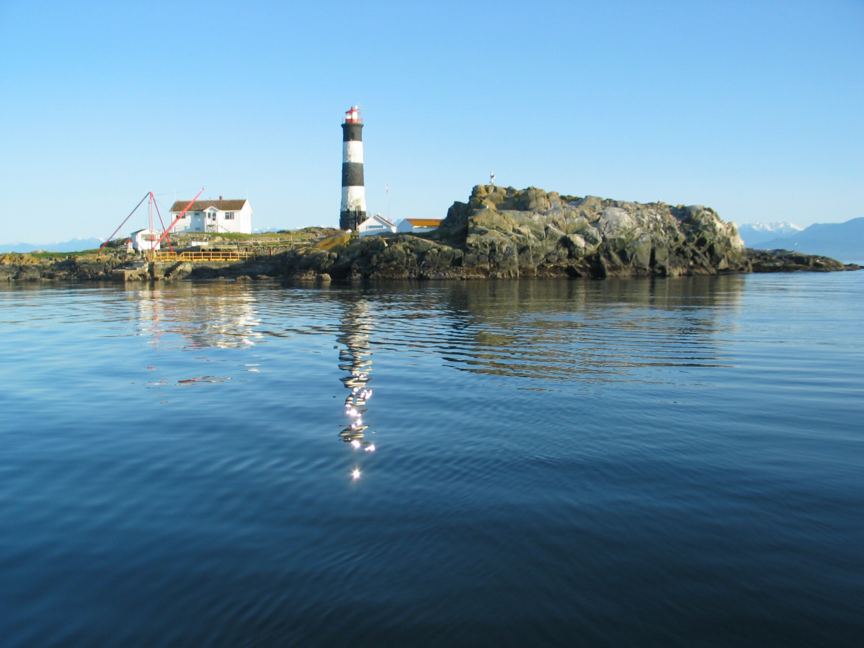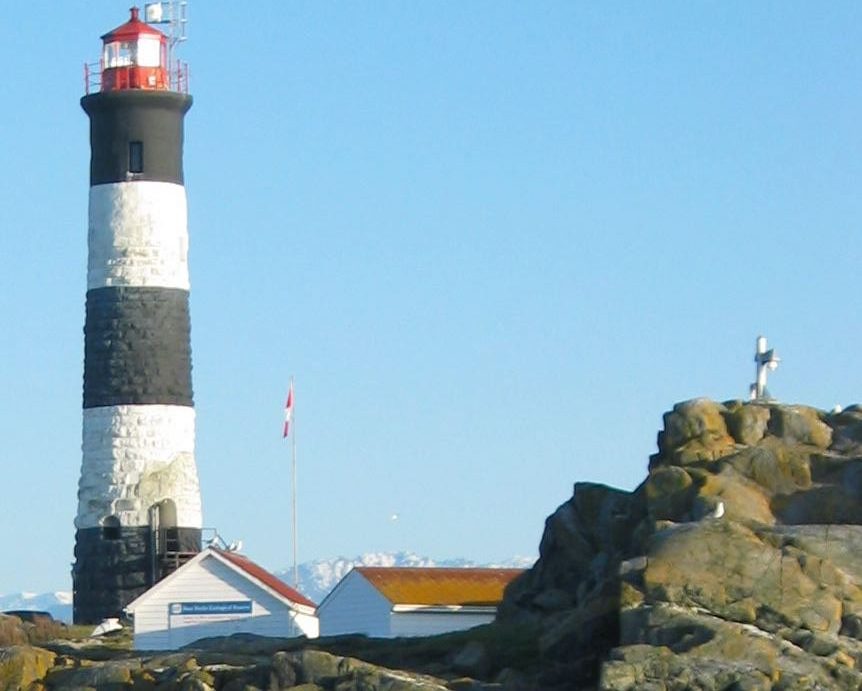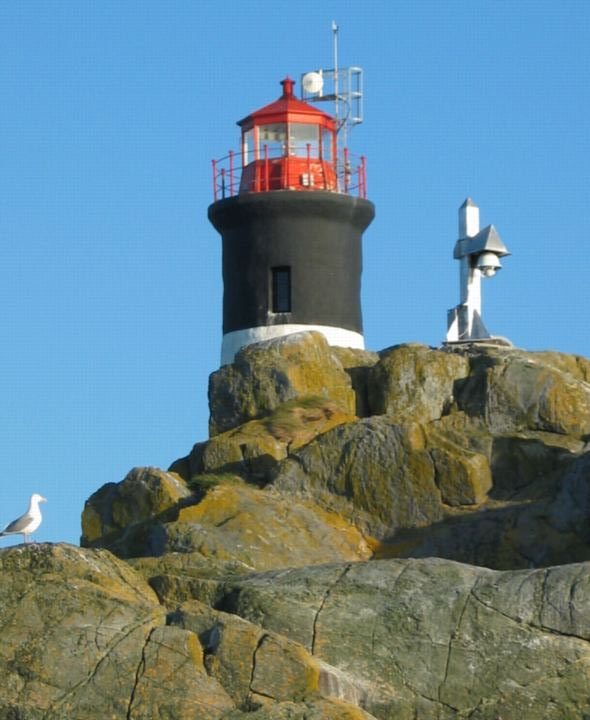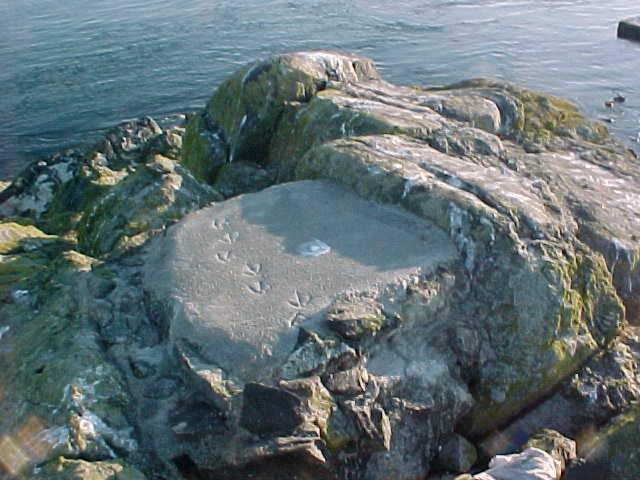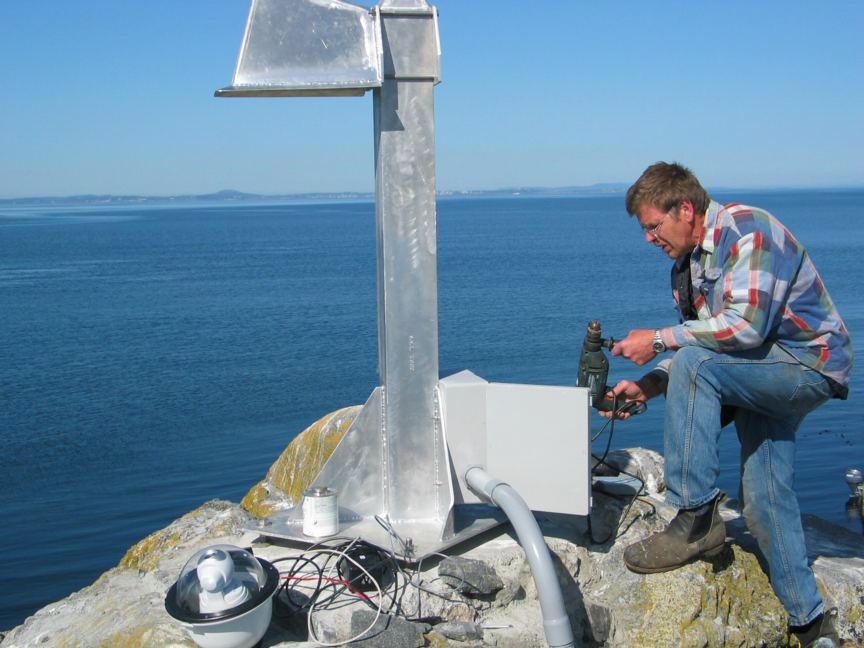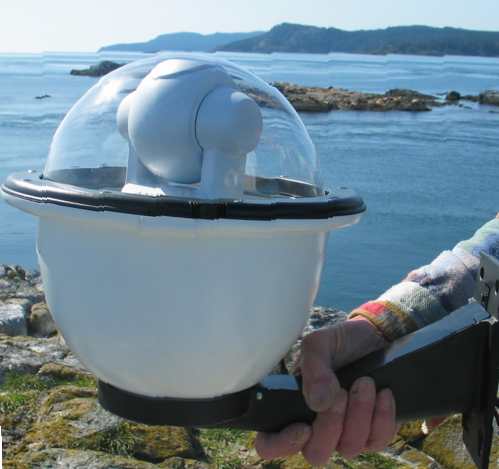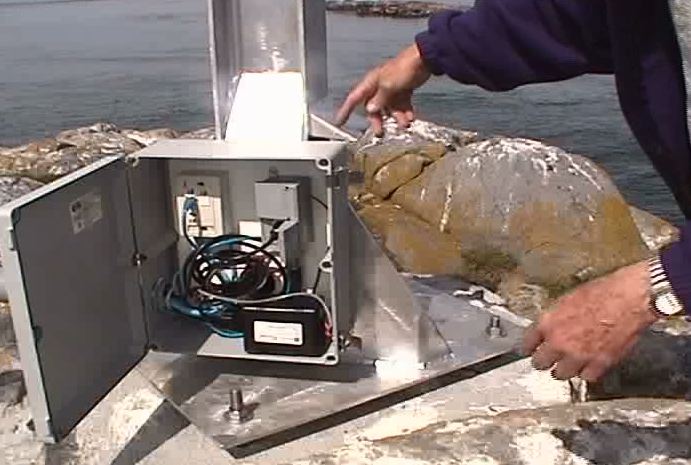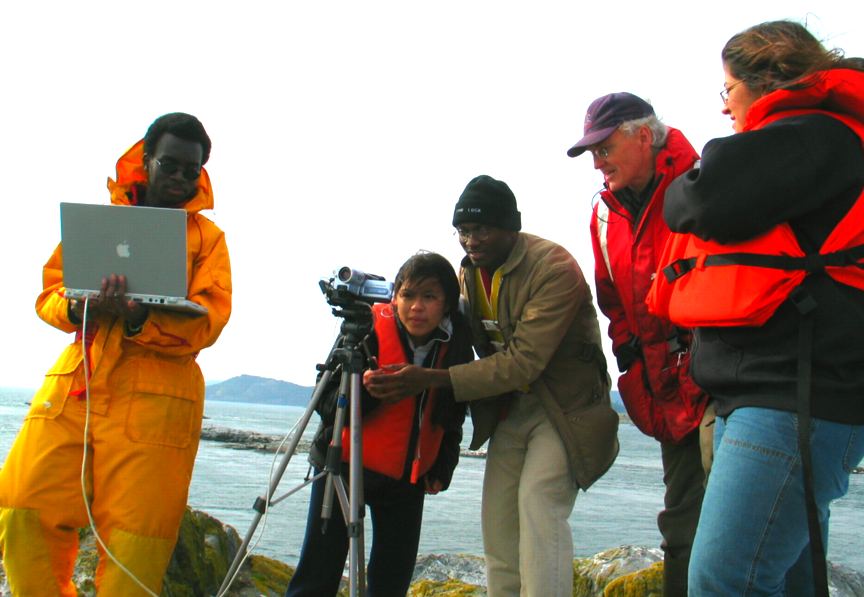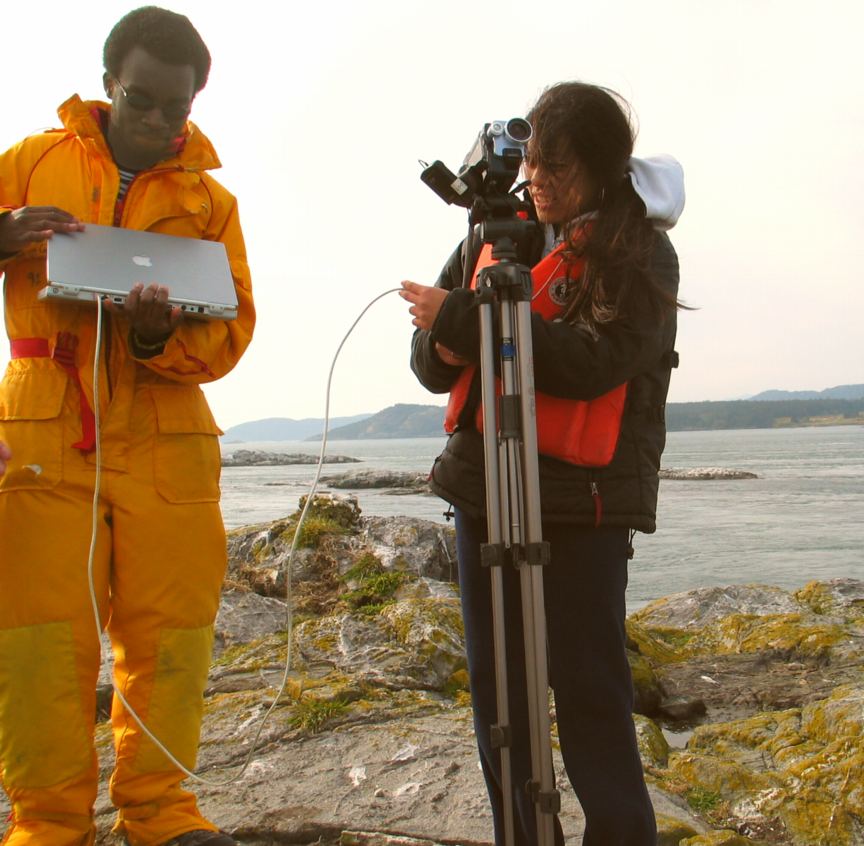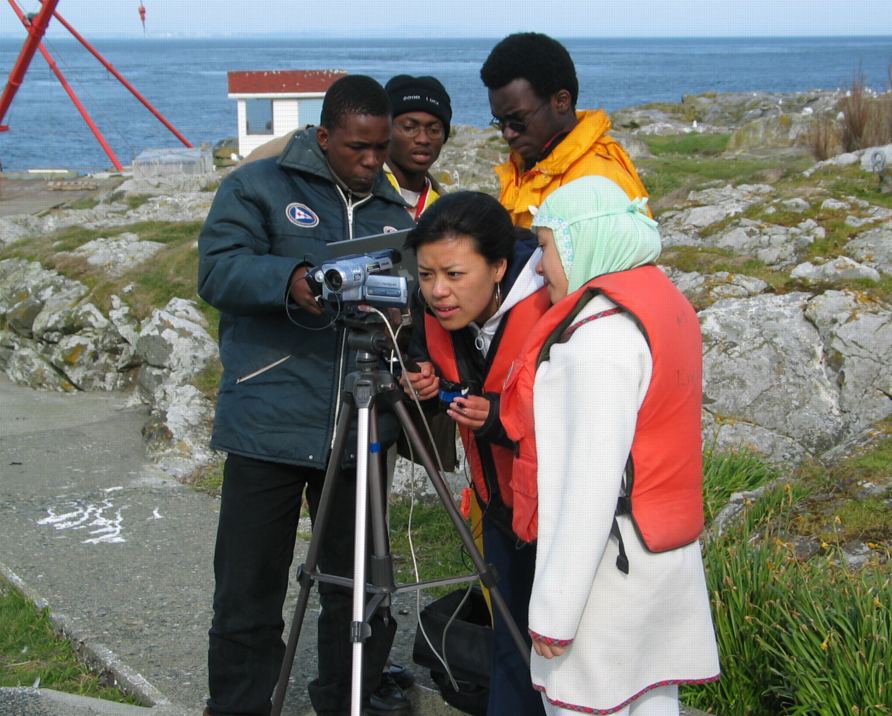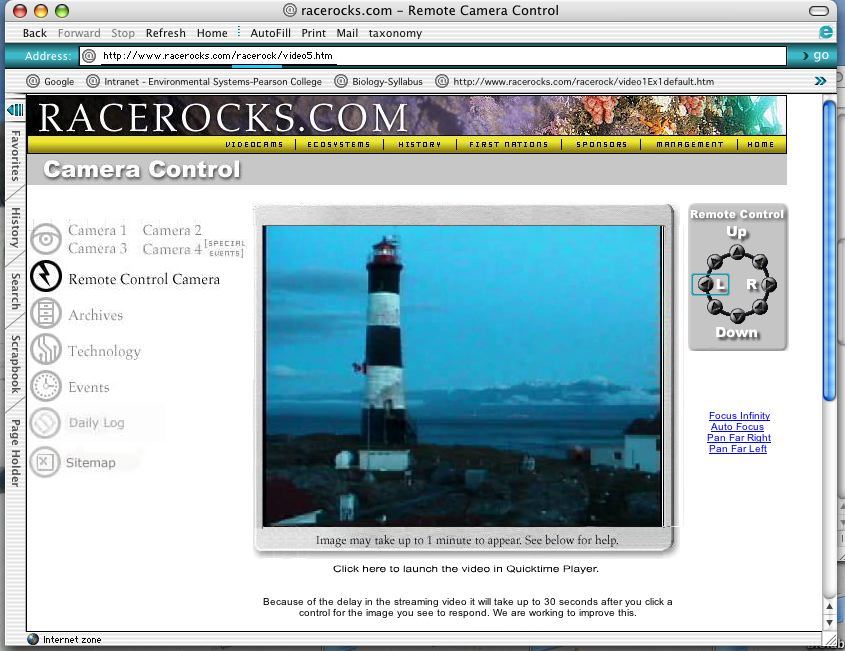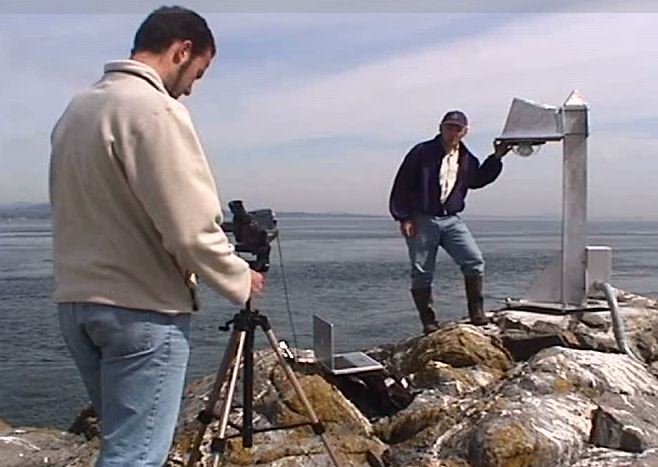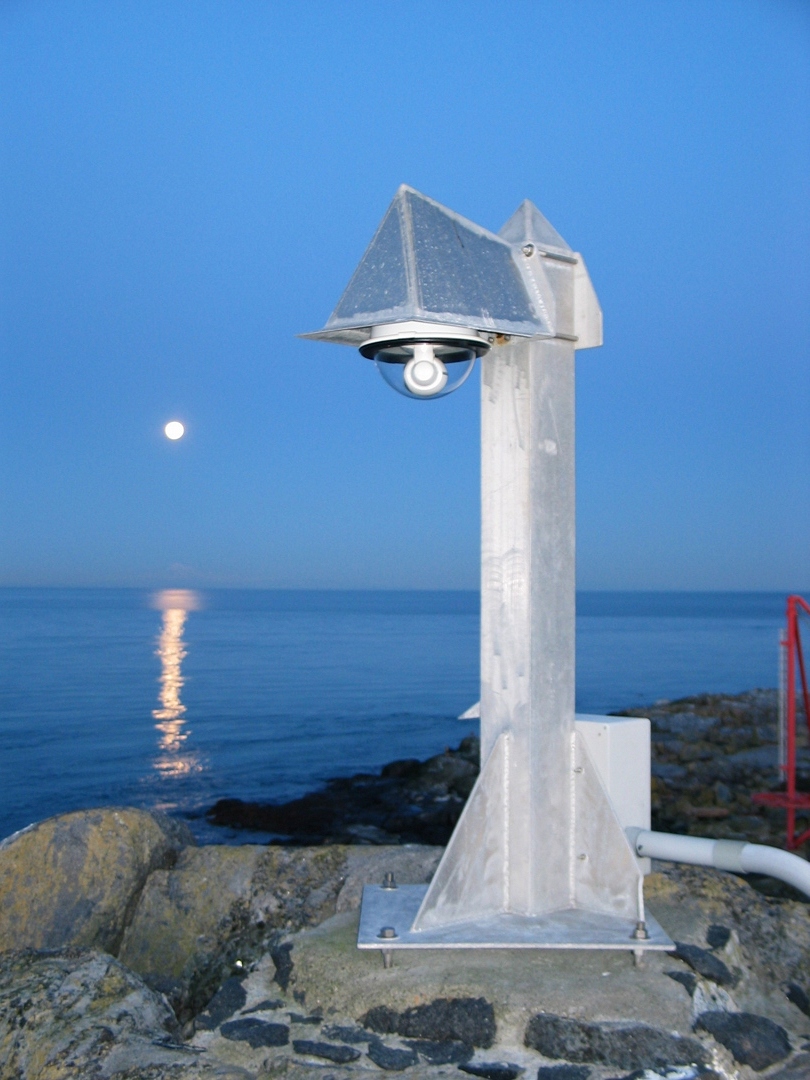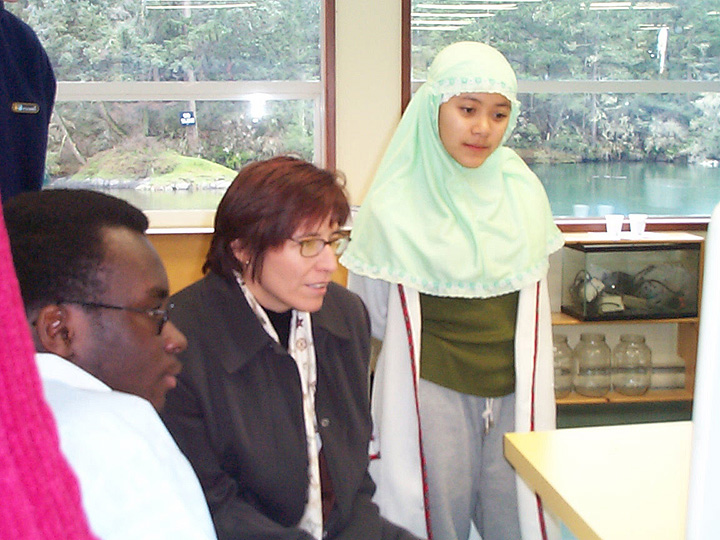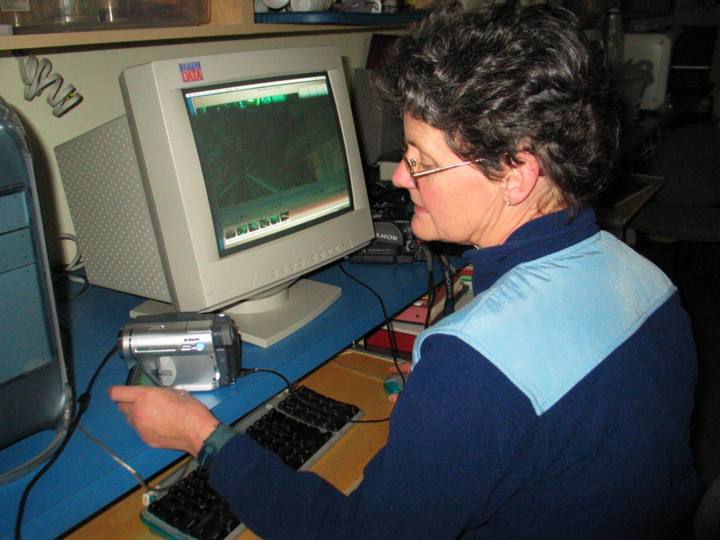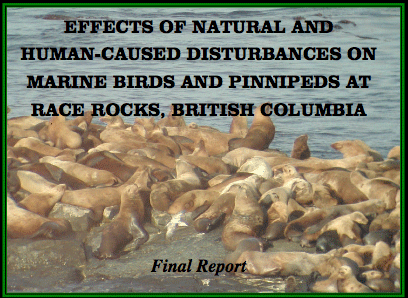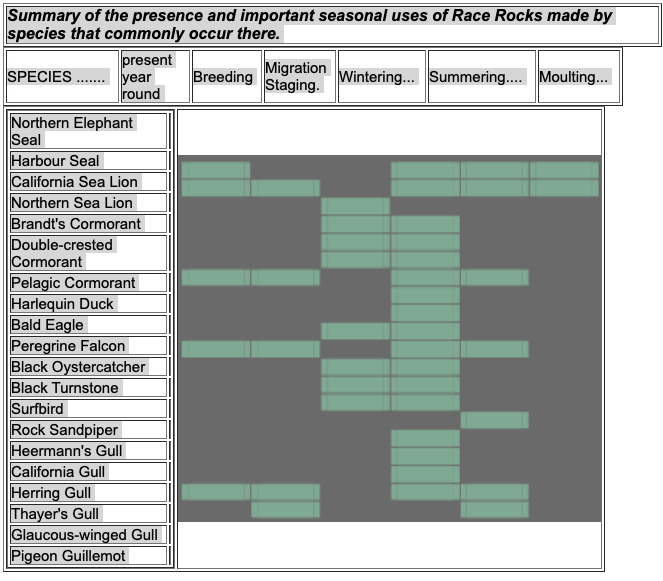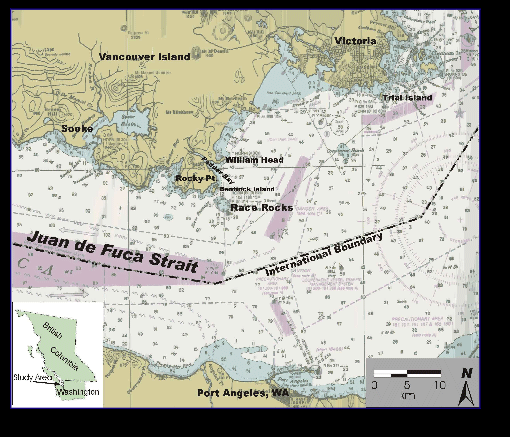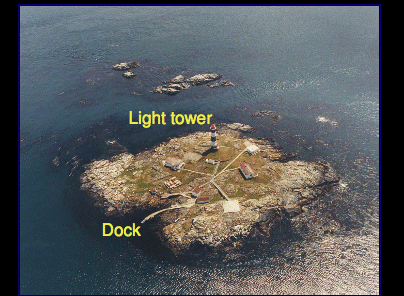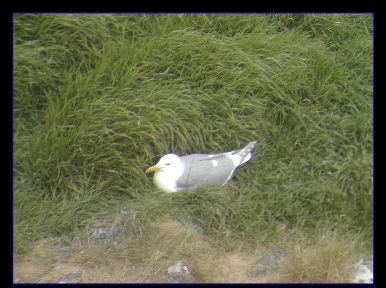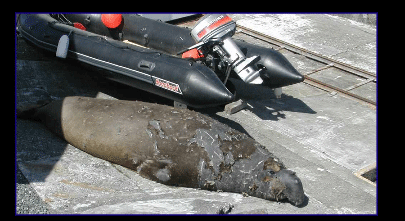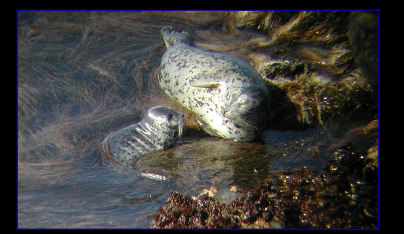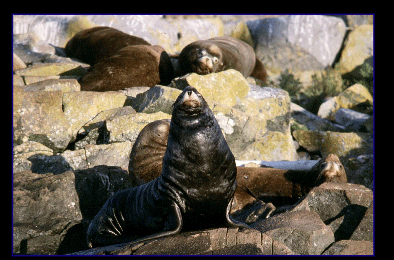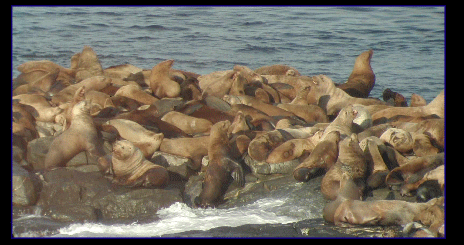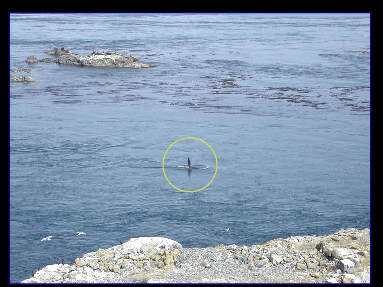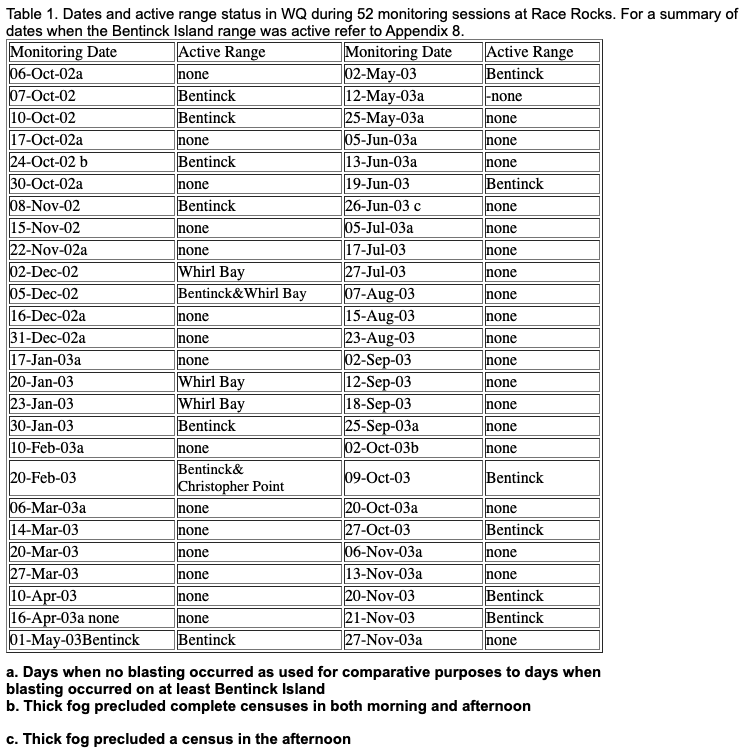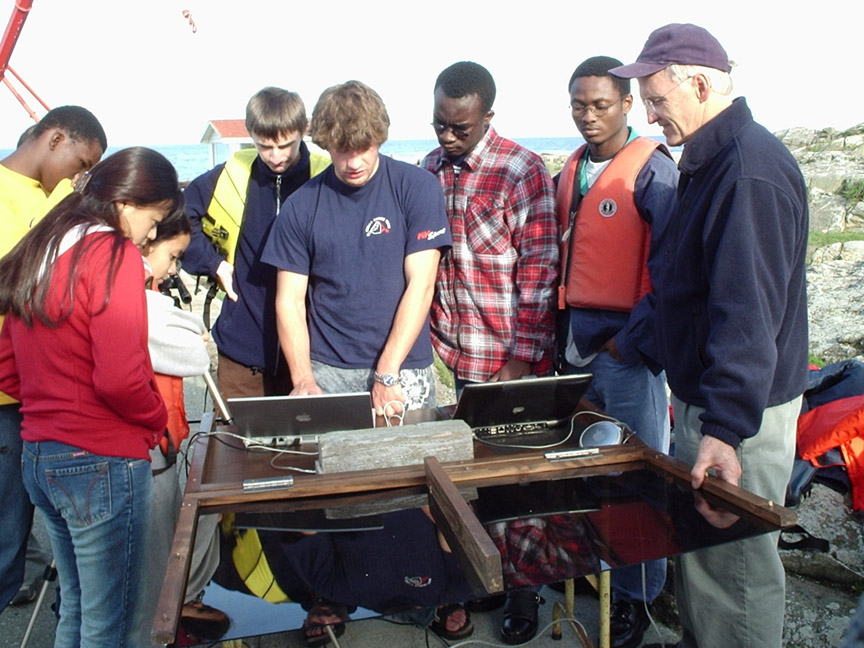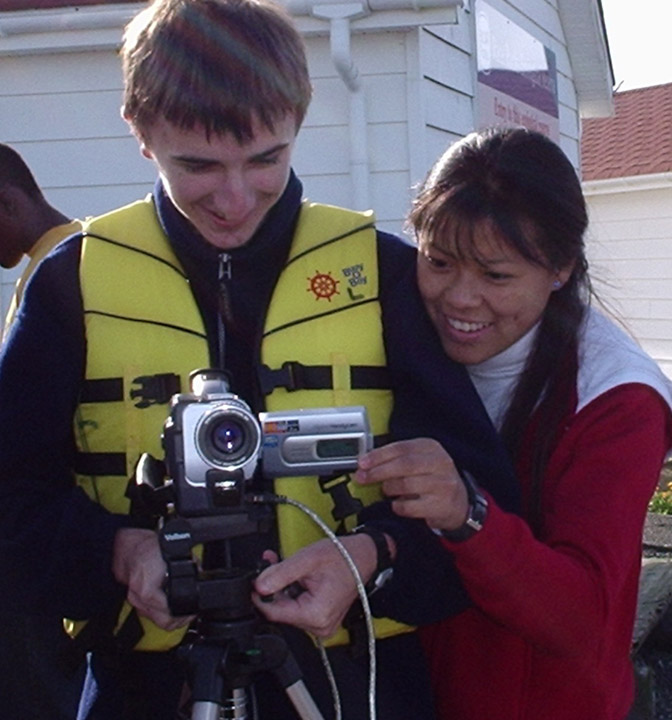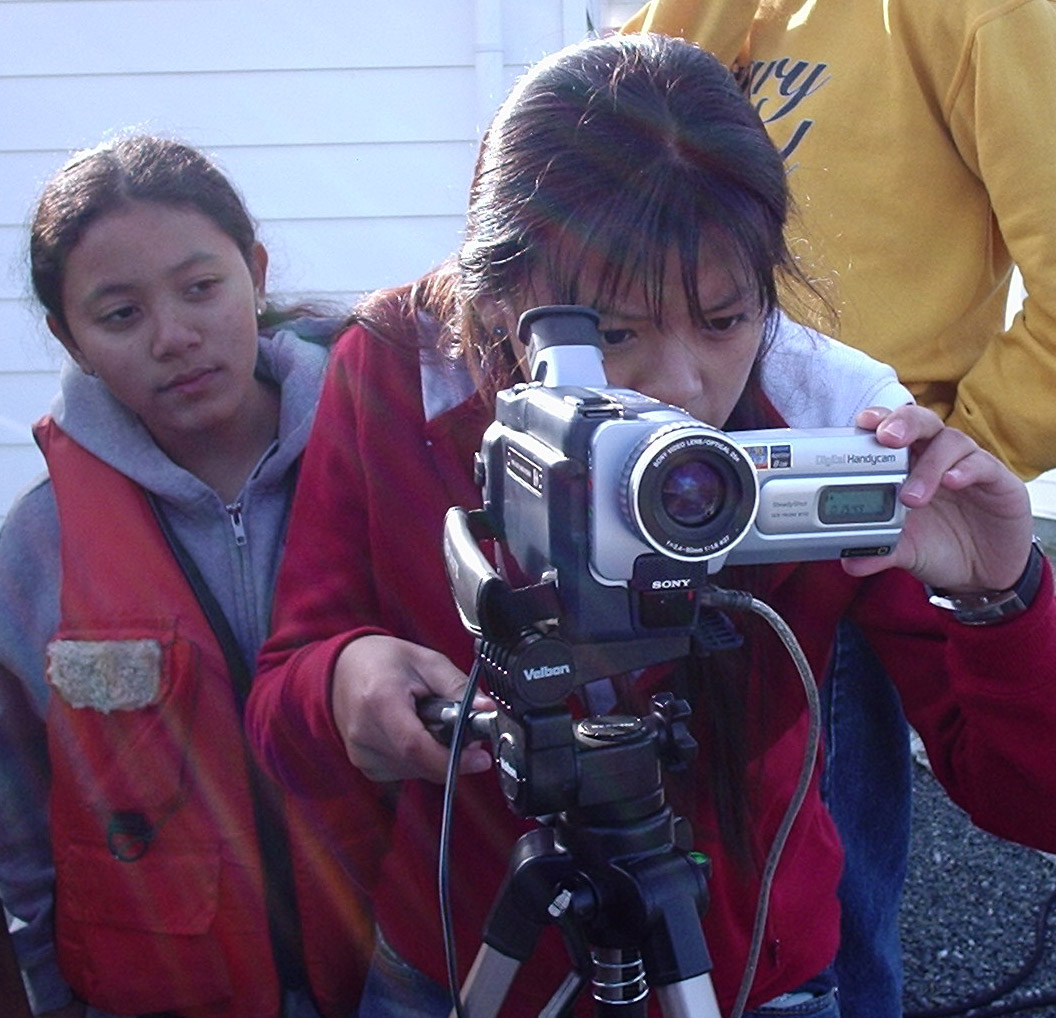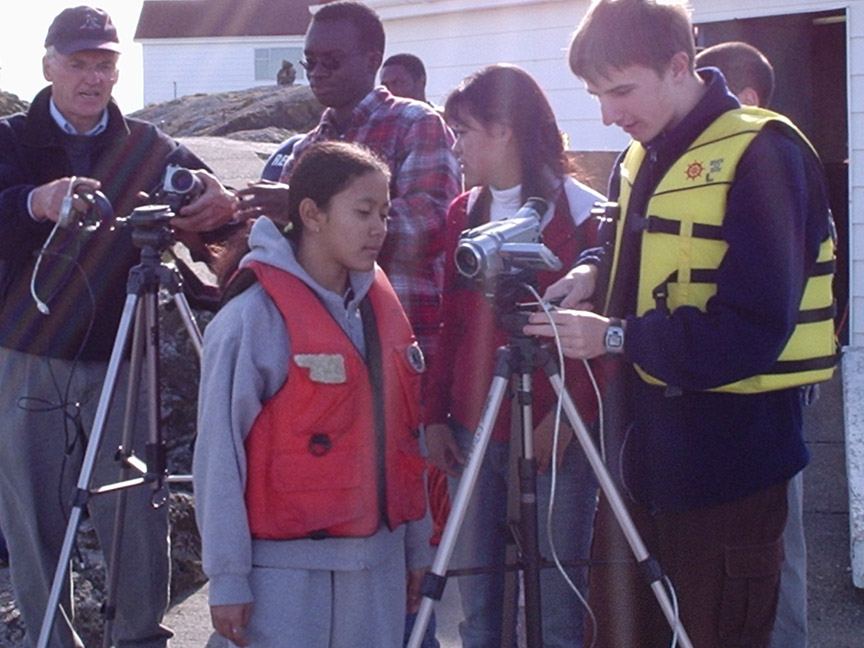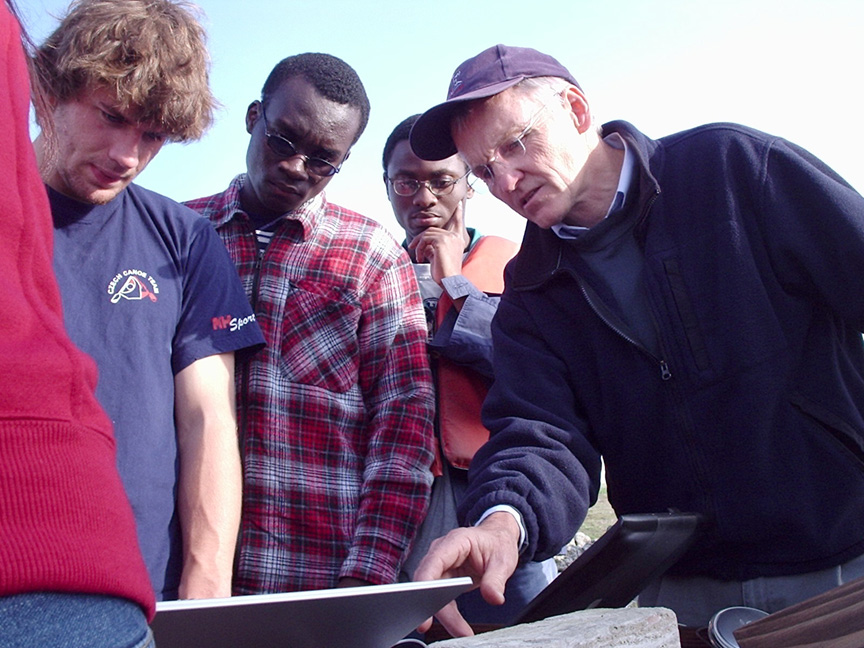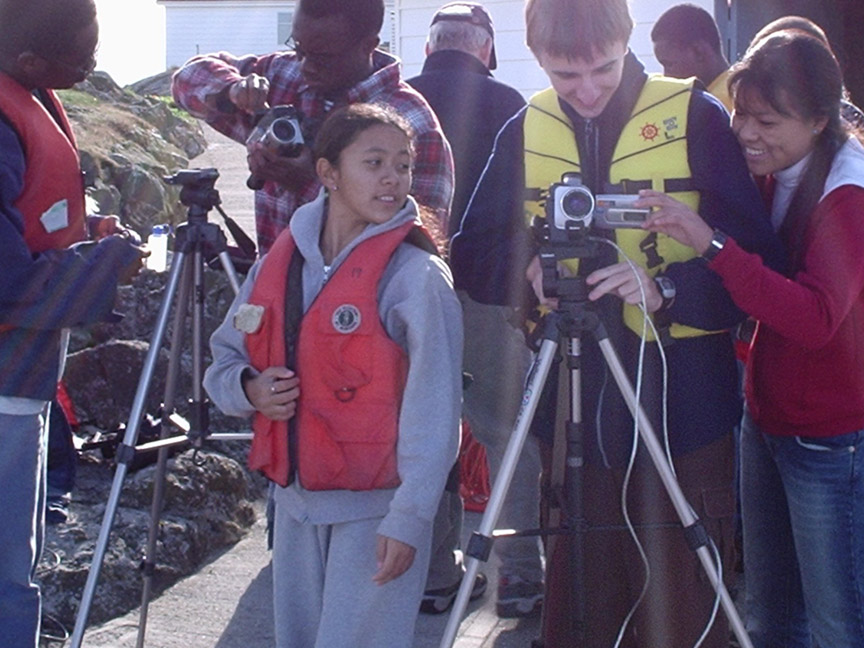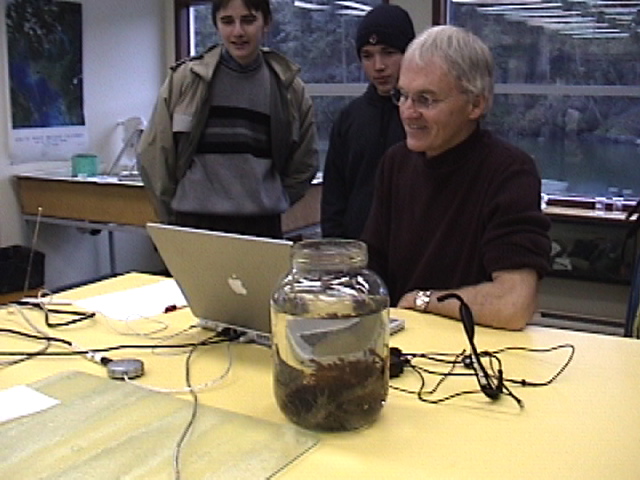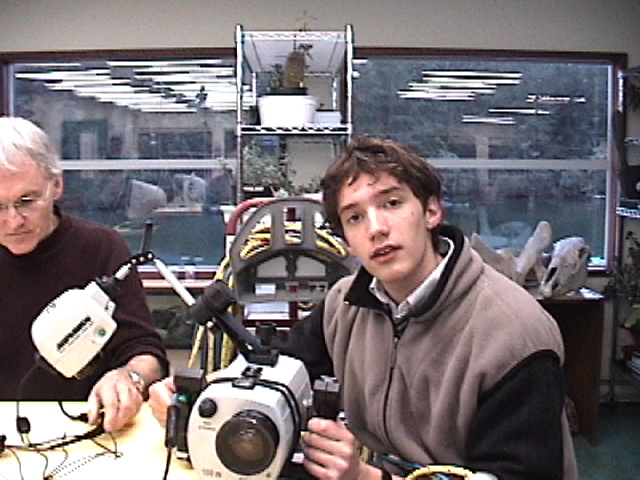This is a summary of the Boat Observations by the Ecoguardians for the year 2008. It has been transferred from the old logging system. Not all occurrances have been logged as the log was functional for only part of the year. GF
Note: remove the first letters, eg (51,
(51, ‘2003-01-02’, ‘Eco-Tour’, 1, ‘ Naturally Salty- 12-15 persons on board. ‘, ‘mike’, ’01:41:50′),
(52, ‘2003-01-03’, ‘Eco-Tour’, 1, ‘Naturally Salty through the reserve late afternoon.Could not determine the number of persons on board as it was fairly rough going in the tide and everyone was inside the cabin.’, ‘Mike’, ’01:07:27′),
(53, ‘2003-01-04’, ‘Pleasure’, 1, ‘ 1 Pedder Bay rental spent about 1/2 hour ”sightseeing” after fishing the Bedfords ‘, ‘Mike’, ’17:21:19′),
(54, ‘2003-01-05’, ‘Diving’, 1, ‘ There was one, looked like a lifetimer, boat out by Rosedale but with the sun so low in the sky could not count the divers, they were there for about 11/2 hrs.’, ‘Mike’, ’17:31:59′),
(55, ‘2003-01-06’, ‘Eco-Tour’, 1, ‘Naturally Salty through and with passengers on the top deck did scare a number of Sea Lions into the water from Middle Rock.’, ‘Mike’, ’19:02:01′),
(52, ‘2003-01-03’, ‘Eco-Tour’, 1, ‘Naturally Salty through the reserve late afternoon.Could not determine the number of persons on board as it was fairly rough going in the tide and everyone was inside the cabin.’, ‘Mike’, ’01:07:27′),
(53, ‘2003-01-04’, ‘Pleasure’, 1, ‘ 1 Pedder Bay rental spent about 1/2 hour ”sightseeing” after fishing the Bedfords ‘, ‘Mike’, ’17:21:19′),
(54, ‘2003-01-05’, ‘Diving’, 1, ‘ There was one, looked like a lifetimer, boat out by Rosedale but with the sun so low in the sky could not count the divers, they were there for about 11/2 hrs.’, ‘Mike’, ’17:31:59′),
(55, ‘2003-01-06’, ‘Eco-Tour’, 1, ‘Naturally Salty through and with passengers on the top deck did scare a number of Sea Lions into the water from Middle Rock.’, ‘Mike’, ’19:02:01′),
‘2003-01-07’, ‘Pleasure’, 2, ‘ no fishing gear seen so surmise these were sightseers.’, ‘Mike’, ’18:17:10′),
‘2003-01-09’, ‘Eco-Tour’, 0, ‘Naturally Salty through this afternoon.’, ‘Mike’, ’00:47:09′),
‘2003-01-09’, ‘Other’, 1, ‘Second Nature docked twice,dropped off Garry,Scott to work on computers. Returned for pick up.’, ‘Mike’, ’00:49:31′),
(61, ‘2003-01-11’, ‘Pleasure’, 1, ‘1 grey Zodiac type- no name or number.’, ‘Mike’, ’01:24:40′),
(62, ‘2003-01-12’, ‘Eco-Tour’, 1, ‘1 orange rib -didn”t get the name’, ‘Mike’, ’01:39:49′),
(63, ‘2003-01-12’, ‘Pleasure’, 1, ‘ 3 persons- 18” Hurston’, ‘Mike’, ’01:42:03′),
(64, ‘2003-01-13’, ‘Pleasure’, 2, ‘ recreational fishermen, sightseeing, no fishing gear.’, ‘Mike’, ’01:31:04′),
(65, ‘2003-01-14’, ‘Pleasure’, 1, ‘ recreational fisher viewing wildlife’, ‘Mike’, ’00:44:10′),
(66, ‘2003-01-14’, ‘Eco-Tour’, 1, ‘ Naturally Salty – Northern Sea Lions hauled out on rock just east of middle rock went into the water as the boat passed by – seems the hight is intimidating’, ‘Mike’, ’00:50:55′),
(67, ‘2003-01-16’, ‘Other’, 1, ‘Second Nature – Garry re computer’, ‘Mike’, ’01:47:12′),
(68, ‘2003-01-16’, ‘Pleasure’, 1, ‘Viewing Wildlife’, ‘Mike’, ’01:49:02′),
(69, ‘2003-01-16’, ‘Eco-Tour’, 1, ”, ‘Mike’, ’01:49:15′),
(70, ‘2003-01-19’, ‘Pleasure’, 2, ‘Sightseers’, ‘Mike’, ’01:27:07′),
(72, ‘2003-01-19’, ‘Diving’, 1, ‘Dive club about 6 divers in the area between West race and dock.’, ‘Mike’, ’01:28:47′),
(71, ‘2003-01-18’, ‘Pleasure’, 6, ‘All sightseers- 1 boat approached the rocks too close and scared 35/40 Northern Sealions into the water – no number or name to identify boat.’, ‘Mike’, ’02:09:43′),
(73, ‘2003-01-19’, ‘Eco-Tour’, 1, ‘Naturally Salty- the boat”s high profile with people on the top deck causes some Sealions to take to the water.’, ‘Mike’, ’01:30:31′),
(74, ‘2003-01-20’, ‘Diving’, 1, ‘Second Nature – afternoon dive’, ‘Mike’, ’23:46:29′),
(75, ‘2003-01-23’, ‘Other’, 0, ‘Zodiac in with LGL observers just before 9 until 17:00\r\nFiheries patrol boat with the 2 officers ( Stefan, Roy)discussed up coming meetings and agreed with them that a 2 knt speed limit would be a positive step in protecting wildlife in the reserve.’, ‘Mike’, ’00:17:36′),
(76, ‘2003-01-23’, ‘Other’, 2, ”, ‘Mike’, ’00:19:16′),
(77, ‘2003-01-24’, ‘Other’, 1, ‘Chris in this morning to pick up some supplies.’, ‘Mike’, ’00:30:10′),
(78, ‘2003-01-25’, ‘Pleasure’, 2, ‘1 rental from Pedder Bay, 1 private.’, ‘Mike’, ’01:34:20′),
(79, ‘2003-01-29’, ‘Pleasure’, 1, ‘Sightseer-2 persons ‘, ‘Mike’, ’00:39:13′),
(80, ‘2003-01-29’, ‘Eco-Tour’, 1, ‘Naturally Salty’, ‘Mike’, ’00:40:01′),
(81, ‘2003-01-29’, ‘Other’, 1, ‘Station boat to Pedder Bay and back.’, ‘Mike’, ’00:40:41′),
(82, ‘2003-01-30’, ‘Other’, 1, ‘zodiac – LGL’, ‘Mike’, ’00:47:41′),
(83, ‘2003-02-03’, ‘Other’, 2, ‘Angus in with Hyaku then Second Nature for about 5 minutes,dropped off some mail- decided conditions not optimum for diving and changed destination to Swordfish Is.’, ‘Mike’, ’01:59:09′),
(84, ‘2003-02-10’, ‘Pleasure’, 3, ‘recreational fishers passing through on way from halibut fishing along reserve boundries to the south.’, ‘Mike’, ’10:58:08′),
(85, ‘2003-02-11’, ‘Pleasure’, 3, ‘Recreational fishers passing through. ‘, ‘Mike’, ’00:36:19′),
(86, ‘2003-02-11’, ‘Eco-Tour’, 2, ”, ‘Mike’, ’00:36:45′),
(87, ‘2003-02-11’, ‘Other’, 0, ‘Station boat to Pedder Bay and return.’, ‘Mike’, ’00:37:18′),
(88, ‘2003-02-12’, ‘Kayak’, 2, ”, ‘Mike’, ’00:44:22′),
(89, ‘2003-02-12’, ‘Eco-Tour’, 2, ”, ‘Mike’, ’00:44:40′),
(90, ‘2003-02-12’, ‘Other’, 1, ‘Station boat to Pedder Bay and return.’, ‘Mike’, ’00:45:08′),
(91, ‘2003-02-14’, ‘Other’, 1, ‘Second Nature in on way home from dive at West Race – Garry to adjust camera/computers and students to see the recovering Elephant Seal.’, ‘Mike’, ’01:11:22′),
(92, ‘2003-02-14’, ‘Eco-Tour’, 2, ”, ‘Mike’, ’01:11:49′),
(93, ‘2003-02-14’, ‘Pleasure’, 1, ‘rec. fisher passing through.’, ‘Mike’, ’01:12:35′),
(94, ‘2003-02-15’, ‘Diving’, 1, ‘The ”Juan de Fuca Warrior” did a morning dive at West Race then returned for an afternoon dive along the north side of Gr. Race ( 7 divers) They did approach a little close to the Eagles that were sitting on the NE tip of Gr. Race chasing them away.’, ‘Mike’, ’01:37:39′),
(95, ‘2003-02-15’, ‘Eco-Tour’, 6, ”, ‘Mike’, ’01:38:05′),
(96, ‘2003-02-15’, ‘Pleasure’, 3, ‘Rec. fishers passed through.’, ‘Mike’, ’01:39:20′),
(97, ‘2003-02-18’, ‘Eco-Tour’, 4, ”, ‘Mike’, ’12:30:54′),
(98, ‘2003-02-18’, ‘Pleasure’, 2, ‘Rec. fishers passing through on way to/from fishing along south and eastern boundries of reserve.’, ‘Mike’, ’12:32:22′),
(99, ‘2003-02-18’, ‘Other’, 1, ‘Station boat to Campus and back.’, ‘Mike’, ’12:32:56′),
(100, ‘2003-02-19’, ‘Eco-Tour’, 4, ”, ‘Mike’, ’02:39:15′),
(101, ‘2003-02-20’, ‘Eco-Tour’, 1, ”, ‘Mike’, ’16:56:07′),
(102, ‘2003-02-20’, ‘Other’, 1, ‘Visitors(LGL) arrived via Zodiac’, ‘Mike’, ’16:57:03′),
(103, ‘2003-03-01’, ‘Eco-Tour’, 0, ”, ‘Mike’, ’16:29:37′),
(104, ‘2003-03-01’, ‘Pleasure’, 0, ”, ‘Mike’, ’16:29:51′),
(116, ‘2003-03-02’, ‘Pleasure’, 3, ‘Rec. fishers passing through.’, ‘Mike’, ’16:56:29′),
(105, ‘2003-03-01’, ‘Other’, 0, ‘ ‘, ‘Mike’, ’16:30:08′),
(115, ‘2003-03-02’, ‘Other’, 1, ‘Second Nature’, ‘Mike’, ’16:47:11′),
(106, ‘2003-02-22’, ‘Other’, 1, ‘Second Nature in -Garry and students for a dive.’, ‘Mike’, ’11:34:47′),
(107, ‘2003-02-21’, ‘Pleasure’, 2, ‘rec. fishers passed through.’, ‘Mike’, ’11:55:06′),
(108, ‘2003-02-21’, ‘Other’, 1, ‘Second Nature -Garry and 5 divers(students)’, ‘Mike’, ’11:55:57′),
(109, ‘2003-02-22’, ‘Diving’, 1, ‘charter dive boat, West Race’, ‘Mike’, ’11:59:57′),
(110, ‘2003-02-22’, ‘Pleasure’, 3, ‘Recreational fishers just passing through.’, ‘Mike’, ’12:00:59′),
(111, ‘2003-02-22’, ‘Eco-Tour’, 2, ”, ‘Mike’, ’12:01:34′),
(112, ‘2003-02-25’, ‘Other’, 1, ‘Second Nature-environmental chem class’, ‘Mike’, ’12:28:23′),
(113, ‘2003-02-26’, ‘Pleasure’, 2, ‘ Rec. fishers passed through.’, ‘Mike’, ’12:39:35′),
(114, ‘2003-02-26’, ‘Other’, 1, ‘Station boat to Pedder Bay and back.’, ‘Mike’, ’12:40:03′),
(117, ‘2003-03-02’, ‘Eco-Tour’, 2, ”, ‘Mike’, ’16:57:39′),
(118, ‘2003-03-06’, ‘Other’, 1, ‘ Inflatable with 2 LGL observers.’, ‘Mike’, ’17:16:03′),
(119, ‘2003-03-06’, ‘Eco-Tour’, 1, ”, ‘Mike’, ’17:36:26′),
(120, ‘2003-03-07’, ‘Pleasure’, 2, ‘Rec. fishers passed through’, ‘Mike’, ’17:37:35′),
(121, ‘2003-03-07’, ‘Other’, 1, ‘Station boat to Pedder Bay and back.’, ‘Mike’, ’17:38:03′),
(122, ‘2003-03-06’, ‘Other’, 1, ‘Hyaku in (Chris) to return 2 students to campus.’, ‘Mike’, ’17:55:14′),
(123, ‘2003-03-09’, ‘Other’, 1, ‘Second Nature in about noon to return students to campus.’, ‘Mike’, ’18:19:21′),
(124, ‘2003-03-09’, ‘Diving’, 1, ‘Dive boat from the Nautilus Explorer- afternoon dive at West Race then returned later with guests/divers for tour.’, ‘Mike’, ’18:21:39′),
(125, ‘2003-03-11’, ‘Other’, 2, ‘2 black inflatables sped through the reserve at about 15:40. They were going too fast and bouncing in the 3 ft. seas to get the registration numbers but had ”police”in white letters along the sides. People on board had yellow jackets with ”police” on the backs. Called Stefan Beckmann-he will inquiries. ‘, ‘Mike’, ’14:38:11′),
(126, ‘2003-03-15’, ‘Diving’, 1, ‘Juan de Fuca Warrior-morning and afternoon dives along north shore of Gr. Race’, ‘mike’, ’01:12:01′),
(127, ‘2003-03-15’, ‘Pleasure’, 3, ‘1 pleasure-sightseeing \r\n2 recreational fishers passing through.’, ‘mike’, ’01:13:05′),
(128, ‘2003-03-16’, ‘Pleasure’, 3, ‘fishers passing through on way to/from fishing outside MPA boundries’, ‘mike’, ’01:15:07′),
(129, ‘2003-03-16’, ‘Other’, 0, ‘station boat to Pedder Bay and return’, ‘mike’, ’01:15:40′),
(130, ‘2003-03-17’, ‘Eco-Tour’, 1, ”, ‘mike’, ’01:16:28′),
(131, ‘2003-03-17’, ‘Other’, 1, ‘Hyaku – Garry over to work on webcams etc.’, ‘mike’, ’01:17:11′),
(132, ‘2003-03-17’, ‘Pleasure’, 1, ‘1 recreational fisher passed through.’, ‘mike’, ’01:18:09′),
(133, ‘2003-03-18’, ‘Pleasure’, 2, ”, ‘mike’, ’01:32:05′),
(134, ‘2003-03-18’, ‘Eco-Tour’, 3, ”, ‘mike’, ’01:32:16′),
(135, ‘2003-03-19’, ‘Pleasure’, 0, ‘sightseer’, ‘mike’, ’01:42:20′),
(136, ‘2003-03-20’, ‘Other’, 1, ‘Zodiak with 2 LGL observers’, ‘mike’, ’01:49:09′),
(137, ‘2003-03-22’, ‘Eco-Tour’, 1, ”, ‘mike’, ’01:50:04′),
(138, ‘2003-03-23’, ‘Pleasure’, 3, ‘1 recreational fisher passing through, 2 sightseers’, ‘mike’, ’01:56:37′),
(139, ‘2003-03-23’, ‘Other’, 1, ‘station boat to Pedder Bay and return’, ‘mike’, ’01:57:06′),
(140, ‘2003-03-26’, ‘Other’, 1, ‘College boat in – Angus and guests’, ‘mike’, ’02:12:39′),
(141, ‘2003-03-27’, ‘Other’, 1, ‘Zodiac – LGL with 2 observers for the day.’, ‘mike’, ’02:14:49′),
(142, ‘2003-03-28’, ‘Other’, 1, ‘Second Nature -Garry with students/diving’, ‘mike’, ’02:16:10′),
(143, ‘2003-03-29’, ‘Pleasure’, 2, ‘recreational fishers passed through’, ‘mike’, ’02:17:24′),
(144, ‘2003-03-29’, ‘Eco-Tour’, 4, ”, ‘mike’, ’02:17:37′),
(145, ‘2003-03-29’, ‘Pleasure’, 1, ‘pleasure craft with 4 divers along north shore of Gr. Race’, ‘mike’, ’02:18:45′),
(146, ‘2003-03-30’, ‘Diving’, 1, ‘Military dive club. 6 divers’, ‘mike’, ’02:20:33′),
(147, ‘2003-03-30’, ‘Eco-Tour’, 3, ”, ‘mike’, ’02:20:50′),
(148, ‘2003-03-31’, ‘Pleasure’, 2, ‘rec. fishers passing through.’, ‘mike’, ’02:21:34′),
(149, ‘2003-03-31’, ‘Eco-Tour’, 4, ”, ‘mike’, ’02:21:48′),
(150, ‘2003-03-31’, ‘Other’, 1, ‘Station boat to Pedder Bay and return.’, ‘mike’, ’02:22:21′),
(151, ‘2003-03-26’, ‘Other’, 1, ‘Chris-Second Nature- brought 2 contractors over to install compost toilets ‘, ‘mike’, ’01:43:33′),
(152, ‘2003-04-01’, ‘Other’, 0, ‘station boat to campus to pick up Mike Wheatley.’, ‘mike’, ’01:59:11′),
(153, ‘2003-04-01’, ‘Eco-Tour’, 1, ”, ‘mike’, ’01:59:27′),
(154, ‘2003-04-01’, ‘Pleasure’, 2, ‘recreational fishers through on way to/from fishing.’, ‘mike’, ’02:00:33′),
(155, ‘2003-04-02’, ‘Eco-Tour’, 4, ”, ‘mike’, ’02:09:27′),
(156, ‘2003-04-02’, ‘Pleasure’, 2, ‘Sightseeing’, ‘mike’, ’02:10:06′),
(157, ‘2003-04-04’, ‘Eco-Tour’, 8, ”, ‘mike’, ’02:22:55′),
(158, ‘2003-04-04’, ‘Pleasure’, 0, ”, ‘mike’, ’02:23:02′),
(159, ‘2003-04-05’, ‘Eco-Tour’, 9, ”, ‘mike’, ’02:24:00′),
(160, ‘2003-04-05’, ‘Pleasure’, 5, ”, ‘mike’, ’02:24:11′),
(161, ‘2003-04-05’, ‘Diving’, 1, ”, ‘mike’, ’02:24:24′),
(162, ‘2003-04-06’, ‘Eco-Tour’, 11, ”, ‘mike’, ’00:46:55′),
(163, ‘2003-04-06’, ‘Pleasure’, 3, ‘rec. fishers passed through.’, ‘mike’, ’00:47:44′),
(164, ‘2003-04-07’, ‘Eco-Tour’, 9, ”, ‘mike’, ’00:48:21′),
(165, ‘2003-04-08’, ‘Eco-Tour’, 5, ”, ‘mike’, ’00:58:09′),
(166, ‘2003-04-08’, ‘Pleasure’, 1, ‘rec. fisher passed through.’, ‘mike’, ’00:58:36′),
(167, ‘2003-04-09’, ‘Eco-Tour’, 5, ”, ‘mike’, ’01:08:43′),
(168, ‘2003-04-09’, ‘Pleasure’, 1, ‘sightseer’, ‘mike’, ’01:09:05′),
(169, ‘2003-04-10’, ‘Other’, 2, ‘LGL Zodiac, Hyaku’, ‘mike’, ’01:20:03′),
(170, ‘2003-04-10’, ‘Eco-Tour’, 4, ”, ‘mike’, ’01:21:02′),
(171, ‘2003-04-10’, ‘Pleasure’, 2, ‘1 sightseer and 1 rec. fisher through on way to Halibut fishing just outside MPA boundries.’, ‘mike’, ’01:22:37′),
(172, ‘2003-04-14’, ‘Eco-Tour’, 5, ”, ‘mike’, ’01:33:40′),
(173, ‘2003-04-14’, ‘Pleasure’, 2, ‘rec. fishers passed through.’, ‘mike’, ’01:34:06′),
(174, ‘2003-05-30’, ‘Pleasure’, 1, ‘Small boat speeding around north race rocks’, ‘student’, ’13:08:28′),
(175, ‘2003-05-31’, ‘Pleasure’, 0, ‘One engine-powered sailboat passed through the two largest islands of West Race and then back south between Great Race and West Race at approx 12:45\r\nIt was carrying 2 people, moving very slowly and keeping enough distance between it and the islands. No marine life were seen to be agitated. \r\nBoat number 13K96651, name SONAR’, ‘studentLBPC’, ’13:11:47′),
(176, ‘2003-05-31’, ‘Pleasure’, 1, ‘Sailboat sailing too close to west race rocks’, ‘lbpc student’, ’19:11:23′),
(177, ‘2003-06-01’, ‘Eco-Tour’, 1, ‘Prince of Whales Whale Watching tour boat from the Epress Hotel passed between West Race and Great Race at approx 1100. 10 people were on board. They did not appear to disturb any marine life. Several sea lions approached the boat.\r\nBoat number – C01608’, ‘studentLBPC’, ’14:07:24′),
(178, ‘2003-04-15’, ‘Pleasure’, 2, ”, ‘Mike’, ’03:41:37′),
(179, ‘2003-04-15’, ‘Eco-Tour’, 7, ”, ‘Mike’, ’03:41:57′),
(180, ‘2003-04-15’, ‘Other’, 1, ‘Station boat to Pedder Bay and return’, ‘Mike’, ’03:42:30′),
(181, ‘2003-04-16’, ‘Other’, 1, ‘inflatable/LGL observers’, ‘Mike’, ’03:45:22′),
(182, ‘2003-04-16’, ‘Other’, 1, ‘Second Nature – 3 trips with classes( Garry and Lara) Then Lara with in afternoon with students for a dive’, ‘Mike’, ’03:47:23′),
(183, ‘2003-04-16’, ‘Pleasure’, 1, ‘rec. fisher passing through’, ‘Mike’, ’03:47:56′),
(184, ‘2003-04-16’, ‘Eco-Tour’, 5, ”, ‘Mike’, ’03:48:40′),
(185, ‘2003-04-17’, ‘Other’, 0, ‘Second Nature with Systems classes’, ‘Mike’, ’03:50:34′),
(186, ‘2003-04-17’, ‘Eco-Tour’, 3, ”, ‘Mike’, ’03:50:50′),
(187, ‘2003-04-17’, ‘Fishing’, 1, ‘Rec. fisher passed through.’, ‘Mike’, ’03:51:38′),
(188, ‘2003-04-18’, ‘Eco-Tour’, 2, ”, ‘Mike’, ’03:52:19′),
(189, ‘2003-04-18’, ‘Pleasure’, 1, ”, ‘Mike’, ’03:52:35′),
(190, ‘2003-04-18’, ‘Fishing’, 2, ‘Rec.fisher passed through’, ‘Mike’, ’03:53:16′),
(191, ‘2003-04-19’, ‘Pleasure’, 4, ‘1 boat from was from Washington State’, ‘Mike’, ’03:54:52′),
(192, ‘2003-04-19’, ‘Pleasure’, 3, ‘Rec. fishers passed through’, ‘Mike’, ’03:55:34′),
(193, ‘2003-04-19’, ‘Diving’, 2, ‘divers went into water along North side of Gr. Race’, ‘Mike’, ’03:57:05′),
(194, ‘2003-04-20’, ‘Diving’, 1, ”, ‘Mike’, ’03:57:57′),
(195, ‘2003-04-20’, ‘Eco-Tour’, 4, ”, ‘Mike’, ’03:58:11′),
(196, ‘2003-04-20’, ‘Pleasure’, 1, ”, ‘Mike’, ’03:58:21′),
(197, ‘2003-04-21’, ‘Other’, 1, ‘several trips for Second Nature with Biology classes’, ‘Mike’, ’04:00:04′),
(198, ‘2003-04-21’, ‘Eco-Tour’, 5, ”, ‘Mike’, ’04:00:30′),
(199, ‘2003-04-21’, ‘Pleasure’, 2, ‘Rec. fishers passed through’, ‘Mike’, ’04:01:01′),
(200, ‘2003-04-22’, ‘Other’, 1, ‘Second Nature several trips with Biology classes – also Scott to install Towercam.’, ‘Mike’, ’04:03:20′),
(201, ‘2003-04-22’, ‘Pleasure’, 3, ‘Rec. fishers passed through’, ‘Mike’, ’04:03:51′),
(202, ‘2003-04-22’, ‘Eco-Tour’, 4, ”, ‘Mike’, ’04:04:02′),
(203, ‘2003-04-23’, ‘Other’, 1, ‘Second Nature – Lara with Systems class for review’, ‘Mike’, ’04:05:46′),
(204, ‘2003-04-23’, ‘Eco-Tour’, 2, ”, ‘Mike’, ’04:05:57′),
(205, ‘2003-04-23’, ‘Pleasure’, 3, ‘Rec.fishers passing through’, ‘Mike’, ’04:06:27′),
(206, ‘2003-04-24’, ‘Pleasure’, 3, ‘sightseers’, ‘Mike’, ’04:10:20′),
(207, ‘2003-04-24’, ‘Pleasure’, 2, ‘Rec. fishers passed through’, ‘Mike’, ’04:10:47′),
(208, ‘2003-04-25’, ‘Diving’, 2, ”, ‘Mike’, ’04:14:46′),
(209, ‘2003-04-25’, ‘Eco-Tour’, 4, ”, ‘Mike’, ’04:15:08′),
(210, ‘2003-04-25’, ‘Pleasure’, 6, ‘Rec. fishers passed through’, ‘Mike’, ’04:15:33′),
(211, ‘2003-04-25’, ‘Other’, 1, ‘Oak Bay Auxiliary inflatable ‘, ‘Mike’, ’04:18:01′),
(212, ‘2003-04-27’, ‘Diving’, 1, ”, ‘Mike’, ’04:26:14′),
(213, ‘2003-04-27’, ‘Eco-Tour’, 2, ”, ‘Mike’, ’04:26:25′),
(214, ‘2003-04-27’, ‘Pleasure’, 4, ‘sightseers’, ‘Mike’, ’04:26:52′),
(215, ‘2003-04-27’, ‘Pleasure’, 2, ‘Rec.fishers passed through’, ‘Mike’, ’04:27:16′),
(216, ‘2003-04-28’, ‘Other’, 1, ‘Second Nature/Biology class’, ‘Mike’, ’04:30:44′),
(217, ‘2003-04-28’, ‘Pleasure’, 2, ‘Rec. fishers through’, ‘Mike’, ’04:31:04′),
(218, ‘2003-04-28’, ‘Eco-Tour’, 3, ”, ‘Mike’, ’04:31:13′),
(219, ‘2003-04-29’, ‘Pleasure’, 1, ‘Sightseers’, ‘Mike’, ’04:32:20′),
(220, ‘2003-04-29’, ‘Eco-Tour’, 3, ”, ‘Mike’, ’04:32:49′),
(221, ‘2003-04-29’, ‘Pleasure’, 2, ‘Rec. fishers passed through’, ‘Mike’, ’04:33:22′),
(222, ‘2003-04-30’, ‘Other’, 1, ‘Second Nature -Biology class’, ‘Mike’, ’04:35:28′),
(223, ‘2003-04-30’, ‘Pleasure’, 2, ‘Rec. fishers passed through’, ‘Mike’, ’04:36:01′),
(224, ‘2003-04-30’, ‘Eco-Tour’, 2, ”, ‘Mike’, ’04:36:14′),
(5, ‘2003-05-29′, ’09:12:14’, ‘Fishing’, ‘Boat’, ’25K4125′, ‘Was seen at 13:50 fishing inside the reserve. 2 people were on board. They were observed pulling in 1 lincod.\r\nChris Blondeau informed them of their infraction.’, ‘studentLBPC’, ’09:14:26′),
(6, ‘2003-04-25′, ’00:00:13’, ‘Fishing’, ‘Boat’, ‘WN 3347NL’, ‘people jigging just off the dock/left area after informed that area was MPA = no fish taken.’, ‘Mike’, ’04:14:31′),
(7, ‘2003-06-02′, ’14:29:46’, ‘Too Close’, ‘Plane’, ”, ‘A small, 4 seater bush plane (Cessna?) made one pass around the island at approx 150 feet (half the height of the tower?) then headed north. ‘, ‘studentLBPC’, ’14:32:03′),
(8, ‘2003-06-05′, ’11:08:16’, ‘Speed’, ‘Boat’, ‘not visible’, ‘Huge boat. 5 star super cat whalewatching’, ‘Students LBPC’, ’11:08:55′),
(9, ‘2003-06-05′, ’11:58:28’, ‘Too Close’, ‘Boat’, ’14k36514′, ‘Sail boat with number 14k36514 was too close’, ‘Students LBPC’, ’11:58:52′),
(10, ‘2003-07-10′, ’18:12:01’, ‘Speed’, ‘Boat’, ‘Whale Watcher’, ‘One boat of the many that visited the reserve today (morning) obeyed the MPA guidelines perfectly until whales were seen south of the reserve, at which point it sped away, past the west end of Great Race.’, ‘lbpc’, ’02:30:19′),
(11, ‘2003-07-20′, ’15:05:09’, ‘Too Close’, ‘Boat’, ‘no # seen’, ‘Boat “Island Explorer II” too close, too fast- about 3/4 throttle -first trip through 14:25,second trip 15:40. 2-3 ft. wake -caused couple of other tour boats (orange ribs) to bounce pretty good. Sent info to Stefan.’, ‘Mike’, ’15:11:01′),
(12, ‘2003-08-11′, ’10:34:48’, ‘Disruption’, ‘Plane’, ‘Coast Guard Heli’, ‘The Canadian Coast Guard paid an unexpected welcome this morning. It approached the helipad on the west side of the island, did a few wheelies before finally deciding to touch down, and then took off again before setting down next to the tower. , ‘lbpc’, ’10:40:04′),
(13, ‘2003-08-11′, ’10:34:48’, ‘Disruption’, ‘Plane’, ‘Coast Guard Heli’, ‘The Canadian Coast Guard paid an unexpected welcome this morning. It approached the helipad on the west side of the island, did a few wheelies before finally deciding to touch down, and then took off again before setting down next to the tower. They lef’, ‘lbpc’, ’10:45:32′),
(14, ‘2003-08-13′, ’19:35:30’, ‘Too Close’, ‘Boat’, ”, ‘Sea Fun Safari 340-1200 passed too close to North side of Great Race ‘, ‘Shamsher’, ’19:36:54′),
(15, ‘2004-04-10′, ’16:20:58’, ‘Disruption’, ‘Boat’, ”, ‘Dive boat “Inde” disturbed cormorants and sea lions on the east side of the island by coursing to close to it’, ‘Garry’, ’16:22:06′),
(225, ‘2003-06-02’, ‘Eco-Tour’, 1, ‘Sooke Coastal Explorations tour boat passed by West Race at 1310. 10 people were on board. no marine life was seen to be disturbed.’, ‘studentLBPC’, ’13:13:36′),
(226, ‘2003-06-03’, ‘Eco-Tour’, 1, ‘A Sea King Adventures boat passed by West Race Rocks. No violations made.’, ‘LBPC Student’, ’15:05:04′),
(229, ‘2003-06-04’, ‘Kayak’, 1, ‘Lone kayaker past by West Race Rocks. No violations or disturbances recorded.’, ‘LBPC Student’, ’18:02:02′),
(228, ‘2003-06-04’, ‘Pleasure’, 1, ‘One private fishing boat was caught fishing and Speeding at West and North Race Rocks. It had two passengers with boat no. 13K 71881. ‘, ‘LBPC Student’, ’17:58:42′),
(230, ‘2003-06-05’, ‘Eco-Tour’, 2, ‘one of them with 25 passengers’, ‘mike’, ’11:09:18′),
(231, ‘2003-06-05’, ‘Pleasure’, 1, ‘Sail boat with number 14k36514 was too close’, ‘Students LBPC’, ’11:58:22′),
(232, ‘2003-06-05’, ‘Eco-Tour’, 4, ‘4 Great Pacific Adventure Tours whale watching boats headed north between Great Race and West Race. They were not speeding and kept enough distance between the islands. no marine life was seen to be disturbed. 1308. approx 10 passangers on each.’, ‘studentlbpc’, ’13:10:22′),
(233, ‘2003-07-05’, ‘Other’, 0, ‘Inflatable -LGL’, ‘mike’, ’01:24:43′),
(234, ‘2003-07-05’, ‘Eco-Tour’, 19, ”, ‘mike’, ’01:25:01′),
(235, ‘2003-07-05’, ‘Pleasure’, 3, ‘1 local and 2 from Washington State.’, ‘mike’, ’01:26:05′),
(236, ‘2003-07-06’, ‘Diving’, 1, ‘4 divers ‘, ‘mike’, ’02:09:21′),
(237, ‘2003-07-06’, ‘Eco-Tour’, 4, ”, ‘mike’, ’02:09:39′),
(238, ‘2003-07-06’, ‘Pleasure’, 5, ”, ‘mike’, ’02:09:59′),
(239, ‘2003-07-09’, ‘Diving’, 2, ”, ‘lbpc’, ’20:16:05′),
(240, ‘2003-07-10’, ‘Eco-Tour’, 10, ”, ‘lbpc’, ’18:10:57′),
(241, ‘2003-07-10’, ‘Pleasure’, 12, ”, ‘lbpc’, ’18:11:06′),
(242, ‘2003-07-12’, ‘Other’, 2, ‘transfer of Ryan-2 trips\r\nStation boat -slaters back to Race Rocks’, ‘Mike’, ’13:15:52′),
(243, ‘2003-07-12’, ‘Pleasure’, 3, ‘sightseers-1 from washington state’, ‘Mike’, ’13:16:29′),
(244, ‘2003-07-13’, ‘Other’, 2, ‘Hyaku and zodiac’, ‘Mike’, ’13:17:36′),
(245, ‘2003-07-13’, ‘Pleasure’, 5, ‘sightseers’, ‘Mike’, ’13:17:59′),
(246, ‘2003-07-13’, ‘Eco-Tour’, 0, ”, ‘Mike’, ’13:18:10′),
(247, ‘2003-07-14’, ‘Other’, 1, ‘station boat to town-pick up new hot water tank’, ‘Mike’, ’13:24:31′),
(248, ‘2003-07-14’, ‘Pleasure’, 3, ‘sightseers’, ‘Mike’, ’13:24:57′),
(249, ‘2003-07-15’, ‘Pleasure’, 4, ”, ‘Mike’, ’12:11:45′),
(250, ‘2003-07-15’, ‘Eco-Tour’, 6, ”, ‘Mike’, ’12:12:06′),
(251, ‘2003-07-16’, ‘Pleasure’, 2, ‘1 local, 1 from Washington state’, ‘Mike’, ’12:24:15′),
(252, ‘2003-07-16’, ‘Eco-Tour’, 7, ”, ‘Mike’, ’12:24:41′),
(253, ‘2003-07-17’, ‘Other’, 1, ‘LGL inflatable’, ‘Mike’, ’12:35:13′),
(254, ‘2003-07-17’, ‘Pleasure’, 0, ”, ‘Mike’, ’12:35:29′),
(255, ‘2003-07-17’, ‘Eco-Tour’, 1, ”, ‘Mike’, ’12:36:08′),
(256, ‘2003-07-18’, ‘Pleasure’, 2, ”, ‘Mike’, ’12:37:15′),
(257, ‘2003-07-18’, ‘Eco-Tour’, 3, ”, ‘Mike’, ’12:37:31′),
(258, ‘2003-07-19’, ‘Pleasure’, 5, ”, ‘Mike’, ’12:51:05′),
(259, ‘2003-07-19’, ‘Diving’, 1, ‘Private/pleasure boat with 3 divers along north side Gr. Race’, ‘Mike’, ’12:52:25′),
(260, ‘2003-07-20’, ‘Pleasure’, 6, ”, ‘Mike’, ’13:14:03′),
(261, ‘2003-07-20’, ‘Eco-Tour’, 35, ”, ‘Mike’, ’13:14:56′),
(262, ‘2003-07-20’, ‘Diving’, 2, ‘pleasure craft one with 4 divers, the other with 3.’, ‘Mike’, ’13:16:24′),
(263, ‘2003-07-21’, ‘Pleasure’, 4, ”, ‘Mike’, ’13:16:49′),
(264, ‘2003-07-21’, ‘Eco-Tour’, 2, ”, ‘Mike’, ’13:16:59′),
(265, ‘2003-07-22’, ‘Pleasure’, 2, ‘did hear othere boat but fog too thick until 13:30’, ‘Mike’, ’13:38:28′),
(266, ‘2003-07-24’, ‘Pleasure’, 3, ”, ‘Mike’, ’14:42:19′),
(267, ‘2003-07-24’, ‘Diving’, 1, ‘Juan De Fuca Warrior too close -scared Harbour Seal into water, E-mail to DFO’, ‘Mike’, ’14:43:53′),
(268, ‘2003-07-24’, ‘Eco-Tour’, 2, ”, ‘Mike’, ’14:44:06′),
(56, ‘2003-08-26’, ‘Pleasure’, 4, ”, ‘Carol or Mike S’, ’15:56:52′),
(57, ‘2003-08-26’, ‘Eco-Tour’, 27, ”, ‘Carol or Mike S’, ’15:57:07′),
(51, ‘2003-01-02’, ‘Eco-Tour’, 1, ‘ Naturally Salty- 12-15 persons on board. ‘, ‘mike’, ’01:41:50′)
(269, ‘2003-08-13’, ‘Eco-Tour’, 8, ”, ‘Garry’, ’08:02:59′),
(270, ‘2003-09-20’, ‘Eco-Tour’, 9, ”, ‘Carol + Mike’, ’18:01:10′),
(271, ‘2003-09-20’, ‘Diving’, 1, ”, ‘Carol + Mike’, ’18:01:56′),
(272, ‘2003-09-20’, ‘Pleasure’, 3, ”, ‘Carol + Mike’, ’18:02:38′),
(273, ‘2003-09-19’, ‘Pleasure’, 2, ”, ‘Carol + Mike’, ’18:04:13′),
(274, ‘2003-09-19’, ‘Eco-Tour’, 17, ”, ‘Carol + Mike’, ’18:05:02′),
(275, ‘2003-09-21’, ‘Pleasure’, 2, ”, ‘Carol + Mike’, ’18:03:47′),
(276, ‘2003-09-21’, ‘Eco-Tour’, 3, ”, ‘Carol + Mike’, ’18:04:12′),
(277, ‘2003-09-22’, ‘Pleasure’, 2, ”, ‘Carol + Mike’, ’19:56:40′),
(278, ‘2003-09-22’, ‘Eco-Tour’, 3, ”, ‘Carol + Mike’, ’19:57:06′),
(279, ‘2003-09-23’, ‘Eco-Tour’, 2, ”, ‘Carol + Mike’, ’18:45:25′),
(280, ‘2003-09-24’, ‘Eco-Tour’, 35, ”, ‘Carol + Mike’, ’18:40:09′),
(281, ‘2003-09-24’, ‘Pleasure’, 4, ‘sightseers’, ‘Carol + Mike’, ’18:41:17′),
(282, ‘2003-09-24’, ‘Other’, 1, ‘sail boat’, ‘Carol + Mike’, ’18:42:20′),
(283, ‘2003-09-25’, ‘Pleasure’, 3, ”, ‘Carol + Mike’, ’19:36:01′),
(284, ‘2003-09-25’, ‘Eco-Tour’, 2, ”, ‘Carol + Mike’, ’19:36:35′),
(285, ‘2003-09-27’, ‘Fishing’, 1, ’14K31704 fishing in protected area’, ‘Carol + Mike’, ’18:29:47′),
(286, ‘2003-09-27’, ‘Pleasure’, 4, ”, ‘Carol + Mike’, ’18:30:25′),
(287, ‘2003-09-27’, ‘Diving’, 2, ”, ‘Carol + Mike’, ’18:30:53′),
(288, ‘2003-09-27’, ‘Eco-Tour’, 5, ”, ‘Carol + Mike’, ’18:31:17′),
(289, ‘2003-09-28’, ‘Pleasure’, 7, ”, ‘Carol + Mike’, ’18:03:08′),
(290, ‘2003-09-28’, ‘Diving’, 2, ”, ‘Carol + Mike’, ’18:03:31′),
(291, ‘2003-09-28’, ‘Eco-Tour’, 22, ”, ‘Carol + Mike’, ’18:04:01′),
(292, ‘2003-09-29’, ‘Pleasure’, 2, ”, ‘Carol + Mike’, ’17:57:09′),
(293, ‘2003-09-30’, ‘Eco-Tour’, 15, ”, ‘Carol + Mike’, ’18:59:35′),
(294, ‘2003-09-30’, ‘Pleasure’, 1, ”, ‘Carol + Mike’, ’18:59:54′),
(295, ‘2003-10-06’, ‘Pleasure’, 2, ”, ‘Carol + Mike’, ’18:23:29′),
(296, ‘2003-10-08’, ‘Eco-Tour’, 8, ”, ‘Carol + Mike’, ’18:25:19′),
(297, ‘2003-10-10’, ‘Eco-Tour’, 9, ”, ‘Carol + Mike’, ’18:34:24′),
(298, ‘2003-10-10’, ‘Pleasure’, 1, ”, ‘Carol + Mike’, ’18:34:42′),
(299, ‘2003-10-11’, ‘Eco-Tour’, 7, ”, ‘Carol + Mike’, ’18:16:12′),
(300, ‘2003-10-11’, ‘Pleasure’, 1, ”, ‘Carol + Mike’, ’18:16:32′),
(301, ‘2003-10-12’, ‘Eco-Tour’, 2, ”, ‘Carol + Mike’, ’18:17:55′),
(302, ‘2003-10-12’, ‘Pleasure’, 1, ”, ‘Carol + Mike’, ’18:18:15′),
(303, ‘2003-10-13’, ‘Pleasure’, 3, ”, ‘Carol + Mike’, ’19:30:05′),
(304, ‘2003-10-13’, ‘Eco-Tour’, 11, ”, ‘Carol + Mike’, ’19:30:26′),
(305, ‘2003-10-14’, ‘Eco-Tour’, 13, ”, ‘Carol + Mike’, ’18:41:31′),
(306, ‘2003-10-14’, ‘Pleasure’, 2, ”, ‘Carol + Mike’, ’18:42:01′),
(307, ‘2003-10-15’, ‘Eco-Tour’, 11, ”, ‘Carol + Mike’, ’18:24:47′),
(308, ‘2003-10-15’, ‘Pleasure’, 1, ”, ‘Carol + Mike’, ’18:25:10′),
(309, ‘2003-10-16’, ‘Eco-Tour’, 5, ”, ‘Carol + Mike’, ’18:13:03′),
(310, ‘2003-10-17’, ‘Eco-Tour’, 3, ”, ‘Carol + Mike’, ’17:17:58′),
(311, ‘2003-10-18’, ‘Eco-Tour’, 3, ”, ‘Carol + Mike’, ’16:33:33′),
(312, ‘2003-10-19’, ‘Pleasure’, 3, ”, ‘c’, ’16:26:27′),
(313, ‘2003-10-19’, ‘Eco-Tour’, 2, ”, ‘Carol + Mike’, ’16:26:58′),
(314, ‘2003-10-20’, ‘Eco-Tour’, 3, ”, ‘Carol + Mike’, ’16:39:19′),
(315, ‘2003-10-20’, ‘Other’, 1, ‘LGL’, ‘Carol + Mike’, ’16:40:50′),
(316, ‘2003-10-21’, ‘Eco-Tour’, 8, ”, ‘Carol + Mike’, ’16:30:50′),
(317, ‘2003-10-22’, ‘Eco-Tour’, 5, ”, ‘Carol + Mike’, ’16:27:17′),
(318, ‘2003-10-22’, ‘Pleasure’, 1, ”, ‘Carol + Mike’, ’16:27:36′),
(319, ‘2003-10-23’, ‘Eco-Tour’, 8, ”, ‘Carol + Mike’, ’16:55:46′),
(320, ‘2003-10-23’, ‘Pleasure’, 1, ”, ‘Carol + Mike’, ’16:56:33′),
(321, ‘2003-10-24’, ‘Eco-Tour’, 12, ”, ‘Carol + Mike’, ’16:34:59′),
(322, ‘2003-10-24’, ‘Pleasure’, 1, ”, ‘Carol + Mike’, ’16:35:16′),
(323, ‘2003-10-25’, ‘Eco-Tour’, 7, ”, ‘Carol + Mike’, ’16:26:45′),
(324, ‘2003-10-25’, ‘Pleasure’, 1, ”, ‘Carol + Mike’, ’16:27:05′),
(325, ‘1970-01-10’, ‘Diving’, 2, ‘Nautilus explorer visited for dives today – West Rock Inde with approx 15 divers visited for dives of the Main Island at 16:50’, ‘Irena’, ’16:20:07′),
(326, ‘1970-01-10’, ‘Pleasure’, 5, ‘During the day few boats came through the Race Rocks passage whale and sea lion watching. Generally they did not cause any unacceptable distraction’, ‘Garry’, ’18:31:15′),
(327, ‘1970-01-01’, ‘Pleasure’, 3, ‘During the day 3 whale watching boats came through the protected area. They did not cause any unecessary disturbance’, ‘Irena’, ’17:57:06′),
(328, ‘2003-10-31’, ‘Eco-Tour’, 6, ”, ‘Carol + Mike’, ’18:30:16′),
(329, ‘2003-11-01’, ‘Eco-Tour’, 1, ”, ‘Carol + Mike’, ’18:16:47′),
(330, ‘2003-11-01’, ‘Diving’, 1, ”, ‘Carol + Mike’, ’18:17:21′),
(331, ‘2003-11-02’, ‘Eco-Tour’, 2, ”, ‘Carol + Mike’, ’18:19:27′),
(332, ‘2003-11-02’, ‘Diving’, 1, ”, ‘Carol + Mike’, ’18:20:02′),
(333, ‘2003-11-03’, ‘Eco-Tour’, 3, ”, ‘Carol + Mike’, ’18:26:41′),
(334, ‘2003-11-04’, ‘Eco-Tour’, 5, ”, ‘Carol + Mike’, ’18:20:30′),
(335, ‘2003-11-05’, ‘Eco-Tour’, 1, ”, ‘Mike’, ’18:36:23′),
(336, ‘2003-11-06’, ‘Eco-Tour’, 1, ”, ‘Carol + Mike’, ’18:19:02′),
(337, ‘2003-11-06’, ‘Other’, 1, ‘LGL’, ‘Carol + Mike’, ’18:19:36′),
(338, ‘2003-11-07’, ‘Eco-Tour’, 0, ”, ‘Carol + Mike’, ’18:15:44′),
(339, ‘2003-11-08’, ‘Eco-Tour’, 3, ”, ‘Carol + Mike’, ’18:26:54′),
(340, ‘2003-11-08’, ‘Diving’, 0, ”, ‘Carol + Mike’, ’18:27:19′),
(341, ‘2003-11-11’, ‘Eco-Tour’, 3, ”, ‘Carol + Mike’, ’18:18:56′),
(342, ‘2003-11-12’, ‘Eco-Tour’, 3, ”, ‘Carol + Mike’, ’18:23:59′),
(343, ‘2003-11-14’, ‘Pleasure’, 1, ”, ‘Carol + Mike’, ’18:26:17′),
(344, ‘2003-11-14’, ‘Eco-Tour’, 2, ”, ‘Carol + Mike’, ’18:26:37′),
(345, ‘2003-11-15’, ‘Eco-Tour’, 5, ”, ‘Carol + Mike’, ’18:26:46′),
(346, ‘2003-11-15’, ‘Pleasure’, 2, ”, ‘Carol + Mike’, ’18:27:19′),
(347, ‘2003-11-15’, ‘Other’, 1, ‘canoe’, ‘Carol + Mike’, ’18:38:29′),
(348, ‘2003-11-16’, ‘Diving’, 1, ‘8 divers’, ‘Carol + Mike’, ’18:12:47′),
(349, ‘2003-11-16’, ‘Eco-Tour’, 2, ”, ‘Carol + Mike’, ’18:13:42′),
(350, ‘2003-11-16’, ‘Pleasure’, 1, ”, ‘Carol + Mike’, ’18:13:59′),
(351, ‘2003-11-17’, ‘Eco-Tour’, 2, ”, ‘Carol + Mike’, ’18:18:09′),
(352, ‘2003-11-19’, ‘Eco-Tour’, 1, ”, ‘Carol + Mike’, ’18:58:27′),
(353, ‘2003-11-22’, ‘Pleasure’, 1, ”, ‘Carol + Mike’, ’18:18:17′),
(354, ‘2003-11-22’, ‘Eco-Tour’, 1, ”, ‘Carol + Mike’, ’18:18:40′),
(355, ‘2003-11-23’, ‘Eco-Tour’, 2, ”, ‘Carol + Mike’, ’18:19:55′),
(356, ‘2003-11-29’, ‘Diving’, 1, ”, ‘Carol + Mike’, ’18:20:07′),
(357, ‘2003-11-29’, ‘Eco-Tour’, 6, ”, ‘Carol + Mike’, ’18:22:09′),
(358, ‘2003-11-30’, ‘Eco-Tour’, 2, ”, ‘Carol + Mike’, ’18:20:53′),
(359, ‘2003-12-02’, ‘Eco-Tour’, 1, ”, ‘Carol + Mike’, ’18:51:18′),
(360, ‘2003-12-06’, ‘Diving’, 1, ‘Morning’, ‘Carol + Mike’, ’18:29:24′),
(361, ‘2003-12-06’, ‘Eco-Tour’, 1, ‘afternoon’, ‘Carol + Mike’, ’18:29:56′),
(362, ‘2003-12-08’, ‘Eco-Tour’, 1, ”, ‘Carol + Mike’, ’18:30:29′),
(363, ‘2003-12-17’, ‘Other’, 1, ‘military, rigid hull inflatable – no visible I.D.’, ‘Carol + Mike’, ’18:26:39′),
(364, ‘2003-12-20’, ‘Fishing’, 1, ‘boat # 6K8354 truck lic. 1213YH taking bottom fish.’, ‘Carol + Mike’, ’18:14:18′),
(365, ‘2003-12-20’, ‘Pleasure’, 1, ”, ‘Carol + Mike’, ’18:15:48′),
(366, ‘2003-12-20’, ‘Eco-Tour’, 2, ”, ‘Carol + Mike’, ’18:16:08′),
(367, ‘2003-12-21’, ‘Pleasure’, 2, ”, ‘Mike’, ’18:15:14′),
(368, ‘2003-12-21’, ‘Eco-Tour’, 2, ”, ‘Carol + Mike’, ’18:15:45′),
(369, ‘2003-12-22’, ‘Other’, 1, ‘Chris in to pick Carol up’, ‘C’, ’18:30:21′),
(370, ‘2003-12-22’, ‘Pleasure’, 2, ”, ‘Carol + Mike’, ’18:30:50′),
(371, ‘2003-12-22’, ‘Eco-Tour’, 1, ”, ‘Carol + Mike’, ’18:31:15′),
(372, ‘2003-12-28’, ‘Pleasure’, 2, ”, ‘Carol + Mike’, ’18:27:10′),
(373, ‘2003-12-28’, ‘Eco-Tour’, 1, ”, ‘Carol + Mike’, ’18:27:37′),
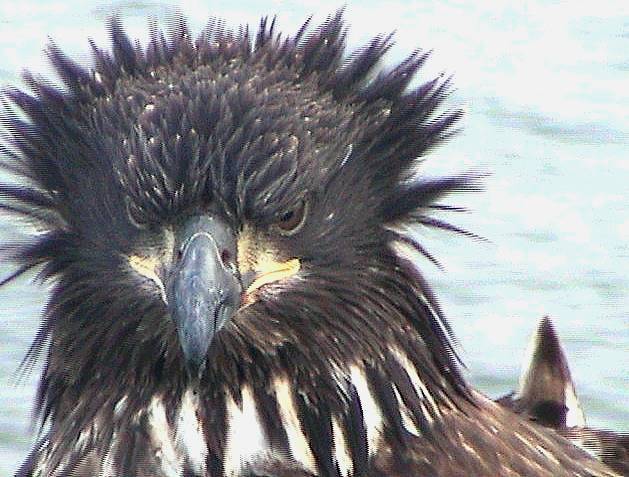 We have had collaboration from viewers in capturing pictures from this camera. See this example.
We have had collaboration from viewers in capturing pictures from this camera. See this example.